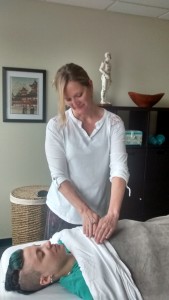The healing benefits of reiki
The healing benefits of reiki
By Kathy Bryant
More people are becoming familiar with reiki (pronounced “ray-key”) and its many benefits. A study done in 2007 by the National Health Interview Survey indicates that 1.2 million adults and 161,000 children received one or more sessions of energy healing therapy such as reiki in the previous year. Reiki works to heal the body, mind and the spirit on a holistic level. It has been proven to help minimize pain in chronically ill patients and heal depression and stress among other things.
Mikao Usui, Sensei of Tokyo, founded reiki in the early 1900s. One of his students was Mrs. Hawayo Takata. In 1935, Takata was diagnosed with several serious illnesses. She was referred to a reiki clinic where she returned to health in two months and was completely healed after eight. In 1937, she brought reiki to the U.S. where she continued to teach it until her passing in 1980.
Reiki is traditionally defined as the universal life-force energy. This energy, which flows through a practitioner’s hands, can feel like many things to a client. As the practitioner begins, you may feel a slight tingling sensation, feel heat radiating from her hands; you may see colors or sense waves of energy going through your body among other sensations. Many clients fall asleep or into a deeply relaxed state while receiving treatment. This is your body’s way of allowing the healing to take place.
It is in this state that the ego steps aside and allows our higher self to guide the healing process for our bodies. Many times, we overwork and abuse our bodies with food, alcohol, sugar and caffeine saturated drinks and lack of exercise. All of this can tune us out from our body’s signals. Reiki bypasses the ego’s will to keep control and works with the part of you that is ready to heal. Important ways you can begin to assist yourself in this process are focusing on your breathing, especially when you are stressed, some form of exercise such as yoga, walking or riding your bike, and meditation.
Reiki’s benefits extend beyond just healing your physical body. It heals the emotional aspect also. Sometimes a healing crisis can occur where you experience what feels like an overwhelming amount of emotions arising or get physically sick. More often than not, though, you notice thoughts coming up about events, or have feelings surface you’d forgotten about. If you do experience a lot of emotions coming up, contact a trusted friend or adviser, and ask them to help you through it. Always know that reiki is about helping you release what is no longer serving you and your greatest good.
Reiki can be used in conjunction with other modalities and works very well with body work such as massage or acupressure. Practitioners can assist anyone, even animals, in the healing process. As more people are becoming aware of energy healing and its benefits, a shift is taking place where we are seeing energy work integrated into more mainstream society. Even large hospitals such as NYP/Weill Cornell, are using guided imagery and reiki in palliative care for patients.
If you are wondering whether or not reiki is right for you, consider finding a practitioner who offers a half-hour introduction session, or offers a percentage off the first full session. Reiki is for everyone because it is non-invasive and always healing. It is even something you can do on yourself, if you so choose.
Kathy Bryant is a registered Reiki Master Practitioner and acupressurist. She has studied with teachers both in Madison and Sedona, AZ. She has been helping clients heal for over two and a half years. She owns Adi Shakti’s Center for Sacred Healing, a web-based business and, works at Renu Massage and Day Spa on Madison’s west side. To set up an appointment, visit www.renumadison.com or call Kathy at 608-217-8249.
References: The Center for Reiki Research. www.centerforreikiresearch.org.
“Does the Reiki Touchstone Process Show Support for Reiki?” The Center for Reiki Research. www.centerforreikiresearch.org/RRConclusion.aspx.
“A Modern Reiki Method For Healing (Revised Edition).” Hiroshi Doi. Vision Publications. 2014.
“Comfort Zone.” Anna Sobkowski. www.weill.cornell.edu/news/publications/pdf/medicine2/2010-03.pdf.







